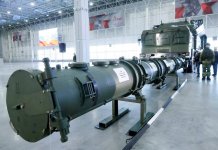During a recent high profile visit of the U.S. Secretary of State Mike Pompeo and Defense Secretary Mark Esper to India for the 2+2 ministerial dialogue, the sales of long-sought MQ-9B SkyGuardian drones was one of the agenda on the table.
Were Haiti, Lebanon & Now Turkey Subjected To A Man-Made Earthquake Via HAARP Technology?
However, according to some recent reports, New Delhi outrightly refused the offer after one of its three services raised a question on the proposed $3 billion deal, citing the cost-worthiness of the aircraft.
If formalized the proposal called for the sales of 30 MQ-9B armed SkyGuardian drones, 10 for each service. The joint services procurement would have seen the first six MQ-9B SkyGuardians worth $600 million (Rs 4,400 crore) purchased outright from US firm General Atomics and delivered to the Indian army, navy, and air force over the next few months—two for each service. The remaining 24 drones were to have been acquired over the next three years.
This comes as a surprise to many defense experts, as India had been eagerly looking forward to acquire these UCAVs. The costs incurred would have been Rs. 900 crore per unit along with a 10% additional annual maintenance cost.
Along with this, the deal would have given no transfer of technology or offsets, an issue raised during several internal meetings.

These would have been the first of its kind armed MALE RPA (Medium-Altitude Long-Endurance Remotely Piloted Aircraft) in the Indian service, with an internal one named TAPAS-BH (aka Rustom-II) being developed by the DRDO.
The deal was sought to be the last ‘diplomatic win’ for Donald Trump, who is awaiting his fate. It is also speculated that the uncertainty of the outcomes of the presidential elections also affected the decision made at Raisina Hill.
However, there is one more catch to it. These drones, which are less maneuverable and carry a lesser payload, are very vulnerable to air defenses – a capability both of India’s rival neighbors – China and Pakistan excel at.
The engagements over Afghanistan and the success rate could be attributed to the lack of air defense capability of the Taliban, while in other parts of the middle east, these drones have been shot down by even the oldest of soviet-era missile systems.
The recent clashes between Armenia and Azerbaijan might have shown how effective these drones could be against enemy armor, meanwhile, it also shows the high number of drone losses for both sides. The high costs and the susceptibility of these systems would also have raised eyebrows for the Indian services.
The deal’s Acceptance of Necessity (AON) is still yet to be approved by the Defense Acquisition Council, which is one of the most important steps in a foreign arms procurement in the Indian government.
The US diplomats wanted the SkyGuardian deal to be the highlight of their visit to India, however, they had to be satisfied only with the highlights of the inking of the Basic Exchange and Cooperation Agreement (BECA), an important milestone between the two nations.
This also allows the Indian operators to use the American navigational and mapping systems, paving a way for future procurement of the MQ-9Bs. The deal could still be signed in the future, but the plan appears to be shelved by New Delhi, at least for now.
Instead, the services might go forward with the “Project Cheetah”, which is to upgrade the existing drones to carry out offensive operations against the enemy. Under this project, 90 Heron drones of the three services would be upgraded to be armed with laser-guided bombs, air to ground, and air-launched anti-tank guided missiles.
The costs saved from signing the SkyGuardian deal could be used more efficiently by investing in long-sought indigenous procurement of LCA Tejas Mk-1As and Light Combat Helicopters, and supporting the internal industries under the helm of “Aatmnirbhar Bharat”.




